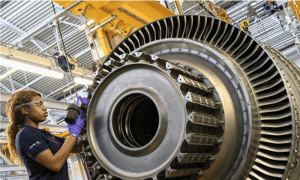 © Dassault Aviation
© Dassault Aviation
Jacques Chauvet, vice president of Worldwide Falcon Customer Service: "The exchanges between Dassault and the MRO world are a very important element"
Jacques Chauvet, vice president of Worldwide Falcon Customer Service: "The exchanges between Dassault and the MRO world are a very important element"
As it does every spring, Dassault Aviation is organising its series of Falcon Maintenance & Operations seminars. This year, the eight-date tour opened in Paris on 4th and 5th April, with over 700 participants. The conductor for this major gathering, Jacques Chauvet, vice president of Worldwide Falcon Customer Service, agreed to answer our questions.
You talked about data processing and analysis a great deal during this seminar. What can this give you?
We want to anticipate breakdowns by collecting all the information which comes from the design office, production and flight tests, as well as from completion centres and operators. This means that we are developing a "health record" for aircraft. With all of this data, if we detect a problem we can establish correlations between the different aircraft and for the whole production cycle.
It is an extremely important asset which will enable us to enhance a feedback base. It will also help us to define troubleshooting tools.
Could it also be applied to equipment and avionics?
We are in contact with partners on this subject. The more we advance the more information we will collect from equipment providers, about spare part stocks and so on, which we will be able to combine.
The problem is that this data comes from a lot of different systems. The advantage of these new tools is that we can centralise them to be able handle them together. The idea is to combine them to detect indicators and weak signals which could enable us to anticipate future equipment breakdowns.
We also mass-process this data with the "Fault History Database". If an aircraft has a problem, we carry out an analysis with the FHDB to understand what's happening and suggest prevention solutions.
Manufacturers and equipment providers seem to understand this logic now, but what about MRO actors? Are you doing anything to guarantee digital continuity?
We are trying to have close contacts with the people in charge of relationships with the MROs. This is essentially the case with major stations in our approved network, less so with small stations. We talk to them and meet them and share the experience we have acquired with the fleet. And, such as for major inspections, we can alert them to potential problems with certain systems or equipment to enable them to anticipate them. We guide the MROs. The exchanges between Dassault and the MRO world are therefore a very important element.
We also market flying hour contracts, which is an extremely strong point. The customer pays a set price and we handle the maintenance directly with the service centres. This service enables us to collect a huge amount of information about aeroplane maintenance thanks to the service-stations' files. We can then analyse this data to enhance feedback.
How do the operators feel about this data sharing?
It's starting to be properly understood. It's in everyone's interest to share their information. Aircraft location remains a delicate subject, so we're not processing that for now. Otherwise, thanks to on-board calculators there's a lot of information about the systems that we can recover.
We have put the Falcon Broadcast in place to handle AOG (aircraft immobilised on the ground, ed.) for the fleet equipped with EASy avionics. This is a very important element for capturing all data. It enables data to be transmitted during flight and after landing.
Will the data then be passed onto the design office?
We have a feedback organisation with teams who analyse this information and a process to pass it onto engineering to define new aircraft. The engineers look at the feedback base to design each new program.
The teams we work with are now more or less combined in order to pass on this information. We have people at the customer service department who are joining the design office teams to work with them. We also work with people on the production side and we will even be adding people from production support to pass on usage problems and enable them to anticipate them. This is a major area for future developments.
On that point, what are your other major orientations to improve your customer service?
Training is extremely important and this is why we continue to place so much emphasis on it. We now organise around ten sessions per year, with over a hundred people trained. We are seeing that there are more and more new technicians, with a lot of people retiring. This is why we are virtually the only company which combines practical training and theoretical training, assisted by 3D modelling.
The technicians in training come to Bordeaux, where they follow practical sessions on aircraft and theory sessions with goggles which enable them to see the interior of the plane and explain the systems. This combination is extremely powerful in terms of effectiveness. We hope to use it to have mechanics who are better trained and more effective on the aircraft.
We can see that we are now going to have a lot of planes heading off to China and the Chinese technicians need training. We feel that theoretical training only isn't enough and so we are pushing for this type of practical training and to create the link between Dassault and these mechanics and maintenance managers.
It's not usually a repeated training program, but there may be refresher sessions. For example, we're going to be producing troubleshooting tools, so we'll need to train people. We'll be producing a session on this subject at the end of the year, once again with both the theory and practical aspects.
Are there other areas you're working on?
I am also emphasising the service centres and network control. Our concern is to be able to have teams located everywhere in the world. The problem is that when you have very isolated aircraft, the business volume is very low. We can see that there are different strategies: in regions where our business jets are concentrated we use a dedicated network, which may also be Dassault Aviation. In isolated zones, call on multi-OEM service-stations. This is the only way for them to be financially viable.
How spare parts are shipped is also very important. We need to work with authorities in the countries a great deal. Customs problems are hard to manage.
And we have a superb tool, Falcon Response, which enables us to transport parts and mechanics practically anywhere with one dedicated aircraft based at Le Bourget and the other at Teterboro (New York). The Asia region is slightly more complicated, as it's very far away. For now, business is relatively slow, but we'll have a look later to see if there's anything specific we can do on site.
What are the regions around the world where you'd like to improve your service?
South America is still complicated. We need to improve our performance, especially with parts' customs clearance. This is also the case in Russia and China. For an aircraft which is registered in China, we need to be able to mobilise mechanics who have been approved by the local authority, the CAAC, which is complicated. We also need parts which have been approved by the CAAC. This means that we had to put in a huge amount of work for our suppliers to have as many of their components as possible approved.
In these countries, we are trying to put spare parts stocks in place to limit transport and customs clearance problems, but we still need enough volume. It's a difficult balancing act, but we're getting better all the time. We could use stock owned by Dassault but placed on consignment with partners.
Could the negotiations on a reciprocal aircraft certification agreement between the EASA and the CAAC move things forward?
For now no, because China wants to be independent of the EASA. Things haven't changed much for the aircraft in service.
Can 3D printing help you manage stock?
We have people working on it, but it's still a tiny part. It poses part certification problems among others. I think we'll get there, but we don't have any urgent needs. We're keeping a close eye on it anyway.
What's happening with your part pricing program?
It's a program that's still going. We'll be producing more campaigns because we are seeing customer feedback on certain articles which aren't very good. We're going to try and shake it all up a bit, re-evaluate the prices and optimise everything.
I couldn't tell you the reduction in part prices over the previous campaigns (the prices of 67 000 of the 80 000 references in the Falcon catalogue were re-evaluated over the last four years, ed.) but the number of customer complaints on this issue fell by 63%.












